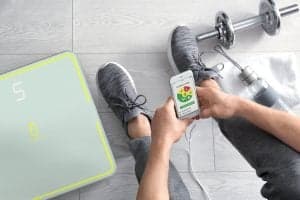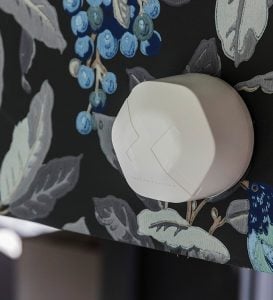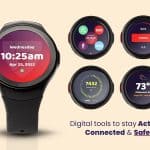
Technology innovations are proving to change the future of fall management and prevention. Image credit: Zibrio
The Future of Fall Management and Prevention
Falls in the senior population are a serious public health concern. With falls causing more than 3 million emergency room visits annually and 800,000 hospitalizations each year, it is no wonder why technology companies are scrambling to find innovative ways to keep older adults safer and on their feet. It’s exciting to see the new fall management and prevention systems that are arriving on the senior care scene. Here are just a few interesting interventions to keep your eyes open for.
Radar

The sensors for the XK400-H Radar Smart Home Solution are discreet and effective. Image credit: Xandar Kardian Inc.
Smart home systems are the wave of the future, and a few are realizing that adding specific sensors and capabilities into their platforms can lead to positive fall management outcomes. Take the XK400-H Radar Smart Home Solution from Xandar Kardian. This innovative system monitors micro-vibrational patterns to determine the heart rates of people in the home, along with other vital signs. The system can also detect falls and has a low false trigger rate, making it one of the most accurate options on the market right now.
Stickers
Remote patient monitoring is a new trend where physicians can gain information about how a patient is faring at home, when away from their office. Having the opportunity to see vital signs over a prolonged period of time, and not just while in the doctor’s office, gives a much better view of how things are really going at home. The new BioButton from BioIntelliSense is a sticker that allows for up to 60 days of continuous monitoring. Monitoring conditions such as low blood pressure or low heart rate can help physicians and patients work out a plan to avoid falling as a complication.
Scales
The Zibrio SmartScale measures more than just a person’s weight. Most importantly, it measures a person’s balance and offers a report that assesses their fall risk based on the balance reading. The scale pairs with an app that not only gives an assessment after a quick 60-second balance test on the scale, but also gives personalized recommendations to reduce fall risk or increase balance.
Available for pre-order, the scale can serve a senior at home as well as in a healthcare setting.
Artificial Intelligence
Finally, artificial intelligence is becoming more prominent in future plans for fall prevention and management. Don’t worry – this doesn’t mean you’ll need a robot in your loved one’s home to assist with balance. Instead, it means that sensor systems throughout the home will gather data that artificial intelligence can then interpret and use to create predictions of what might come next. This means that if your loved one has been sick in bed for a few days, their AI sensor system might notify caregivers of an increased fall risk due to dehydration and deconditioning. Artificial intelligence could hold the key to preventing falls in the first place.
Takeaways
The future of fall management and prevention is bright, and innovations being developed today could put a serious dent in the rising prevalence of senior falls throughout the country. Technology could save lives as well as help seniors steer clear of the emergency room and focus more on personalized fall prevention interventions.


